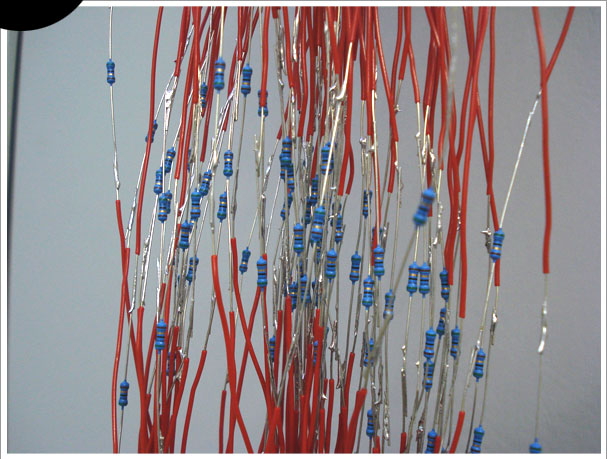

The project is hosted by:

The project is funded by:


The project is sponsored by:


The project is supported by:

![]()

A short historical de-tour
Static electricity is one of the oldest known physical phenomena. The ancient Greeks noticed the amazing ability of amber, once rubbed, to attract light materials despite gravitational forces. Because of its electrostatic properties amber in Greek means 'electron'.
For a long time electrostatic continued to be a source of mystery and amazement, before the rational and scientific approach to understanding the world came about. In the early 17th century fascinating devices and machines that tread between the boundaries of magic and science, conceptually and perceptually, were evolved through the unravelling of static electricity, including the first electrostatic generator by Otto van Guericke.[1] In 1901 various scientific experiments culminated into Dr. Nikola Tesla's plan to wirelessly broadcast electrostatic power to the whole world from his facility at Wardenclyffe in New York.[2]
Public electrostatic demonstrations and performances easily became one of the crowds' favourite entertainments in the 17th to 19th century due to its seemingly miraculous, contradicting experiences. Just one example is Stephen Gray's experiment premiered in London in 1730. He suspended an eight year old boy in mid air, utilising the human body as a medium for static electricity, attracting paper and light objects to the boy's negatively charged face and hands.[3] This type of showmanship converged both artistic and scientific fields of endeavour creating discourse about the employment of human architecture as a medium for interactions with the environment within the context of electrostatics.
Electrostatics today
The existence of constant motions and interactions within urban spaces induces a huge amount of electrical charges in our daily life. Despite this fact, electrostatic has been one of the most underrated forms of energy existing today. The Electrostatics Group of the Institute of Physics states that: "Electrostatics is at the same time both a well-defined subject and a very ill-defined area of research and technology."[4] Little research and investigation has been done to test the effect of these charges in relation to the human body as well as the built environment with the exception of its effect on electronic devices. In modern domestic and industrial environments it is usually regarded as a nuisance or hazard responsible for electrostatic shocks, process problems and industrial fires. Therefore in contemporary man's habitat a rather limiting approach is exercised towards electrostatics in order to reduce electrostatic discharge.
Typically designers of today are embracing restrictive methods by relocating electrostatic into the functional domain. Efficient but prosaic anti-static design solutions are employed to eradicate electrostatic in order to protect sensitive electronic components. Although these solutions, including developments in textiles, are proven to be effective, looking at electrostatic in a different way could provide striking poetic conversations with the environment. In 1996 Dr. Frances Geesin and Ron Geesin suggested a different approach to electrostatic in their collaborative work 'Tri-Aura'. With the help of electronics and computer engineer Spencer Childs they developed interactive textile sculptures which can be triggered by the proximity and movements of the human body.
'Bad Hair Day' - a constantly moving, static lampshade by designer Afroditi Krassa offers another delightful take on product design by employing electrostatics. The lampshade, which is covered in long yarn filaments, becomes statically charged once the light is switched on. This results in the "hair" rising, as if the lamp was a living organism, and they become attracted to any negatively charged material, such as human skin.
The research also draws significantly on Jackson Tan's background in interactive architecture and his experiments related to the field of electrostatics. In 2005 these practical explorations culminated with the design of a 'hard' electrostatic detecting panel that responds to the presence of charges. It was our starting point and our joint challenge to translate this 'hard' technology into the medium of soft textiles.
Within this context the research project was seeking to reconsider the role static electricity plays in human environments using creative strategies and provoking a playful interaction with this natural force. This investigation also concentrates on potentially positive uses and benefits of electrostatic for the development of interactive environmental design strategies using textiles as a medium. The rapidly developing field of smart textiles in combination with the progress in micro-electronics informed and formed the research. By conceptualising, engineering and optimising electronic textile systems the project investigates potential for technology that allows us to interact with the hidden electrostatic world.
- Bernard Seeman. The Story of Electricity and Magnetism. Harvey House Inc, New York, USA, 1967, p. 21
- Tower of dreams.
- Stephen Gray. A Letter Containing Several Experiments Concerning Electricity. Royal Society Philosophical Transactions 37 (1731/1732), London, UK, p. 18-44.
- Electrostatics Group Homepage, Institute of Physics.